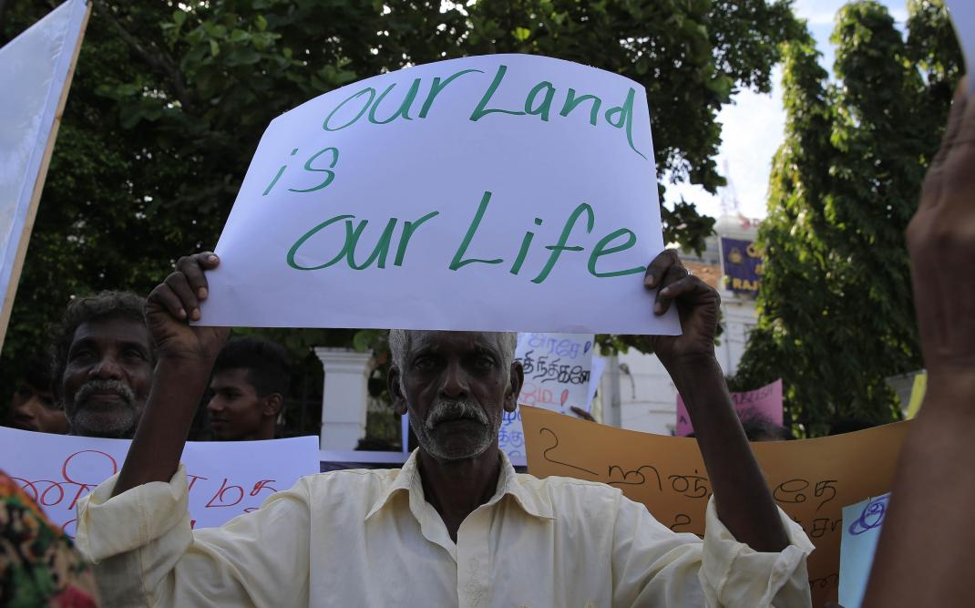Mohammed Shafi: The Stunning Connection between Indigenous Nations and the Tamils
Tamil Environmentalist Sathish Krishnan, part of protest in downtown Toronto in solidarity with Indigenous people resisting RCMP at Wet’suwet’en.
Written by: Mohammed Shafi
One might easily guess my faith background based on my name. Yes, I am a Muslim. And I am brown with my origins from India. However, many whom I meet have gone wrong in assuming that I speak Hindi as my primary language.
In fact, less than 50% of Indians have Hindi as their mother tongue. I am also a Tamil. You read it right. I am not saying that I just speak Tamil, the language, but I am a Tamil by ethnicity. The history of Tamil language and culture goes back by thousands of years.
In the summer of 2008, I became aware of indigenous peoples, after looking at the Totem Poles when I visited Vancouver. It was only five years later, when I moved to Brampton, that I got an opportunity to research more about them. By then, I had decided to call Canada my home.
I have to thank Neethan Shan, a fellow Tamil and then city councillor of Toronto. He encouraged us to acknowledge the indigenous land at a picnic event of a non-profit organization named Tamil Nadu Multicultural Association of Canada. After this, without knowing that there are established land acknowledgements, I actually prepared one after researching the Toronto indigenous history.
Totem Poles at Stanley Park, Vancouver.
The more I read about their history, the more I was astonished. Though they are thousands of miles apart, the indigenous peoples of Canada, and Tamils who are indigenous to the Indian Subcontinent have many things in common especially their relationship to the land.
The other Dravidian linguistic groups along with Tamils considered to be indigenous to the Indian Subcontinent include the speakers of other major Dravidian languages like Telugu, Kannada, Malayalam, and smaller literary languages like Tulu and Kodava.
Before the advent of religions that are popular today, including the religions of India like Shaivism and Vaishnavism [which are now broadly grouped under Hinduism], Buddhism and Jainism or Abrahamic religions like Islam and Christianity that came much later, the Tamils are believed to be the worshippers of nature and their ancestors.
`The recent findings in the archeological excavation of Keezhadi [pronounced, Keeladi], near the city of Madurai of the state of Tamil Nadu in India have added credibility to this theory. None of more than 10,000 artifacts that were found, depicted any sign from any of the above-mentioned religions. Some carbon samples collected here are dating to 580 BCE.
Tholkappiyam [literally, Ancient Poem] of Tamil literature, one of the oldest available in any language of the world, categorize the livelihood of Tamils based on the landscapes they live in. They are Kurinji - mountainous regions, Mullai - forests, Marutam - cropland, Neythal – seashore and Pālai – desert. Tholkappiyam goes on to define the different floura, fauna, food, settlement, waterbodies, occupation, deity and entertainment based on the above landscapes. In Thirukkural, [literally, Sacred Verse] considered one of the greatest works on ethics and morality by Tamils and people across the world, the author Thiruvalluvar, more than 2000 years ago says in a couplet;
“Where spreads fertility unfailing, where resides a band,
Of virtuous men, and those of ample wealth, call that a 'land'”– couplet 731.
Tamils are now spread across the Globe. Canada is home to around 300,000 Tamils approximately. Most of these Tamils tag their origin to either Sri Lanka or Tamil Nadu of India. The current times, for Tamils either in India or Sri Lanka, however, are not so reflective of the above-mentioned fertile land or virtuous men in the couplet. In fact, the very land that they revere is a central theme of their current struggle.
In Sri Lanka, where Tamils have witnessed a genocide in 2009 losing several thousands of lives are still struggling to get their lands back which are being occupied by the Sri Lankan army. In Tamil Nadu of India, the Tamils have been continuously fighting against imposition of Hindi language on them and taking away of their land for potentially harmful initiatives including drilling for hydrocarbon, methane or neutrino observatory. The Tamil Canadians marched from Dundas Square to the Consulate General of India on April 09, 2018 protesting against the Sterlite Copper Smelter Plant at Tuticorin, India. Many placards in that march read, ‘Our Land, Our Rights’.
Land politics is prevalent across the globe. Whether it’s the occupation of Palestine by Israel or the taking away of Kashmiri land by the Indian government, there are many well known examples.
I was wondering if there could be anything more to the spectacular support the people of Toronto showed, during a demonstration in solidarity with the indigenous peoples who are resisting against RCMP in Wet'suwet'en.
Perhaps, the immigrants based on their own history from their land of origin, are able to relate to them. The indigenous land rights struggle should resonate with at least the Tamil Canadians. Because, for many Tamils, like indigenous peoples, land is more than mere commodity.
More Articles


